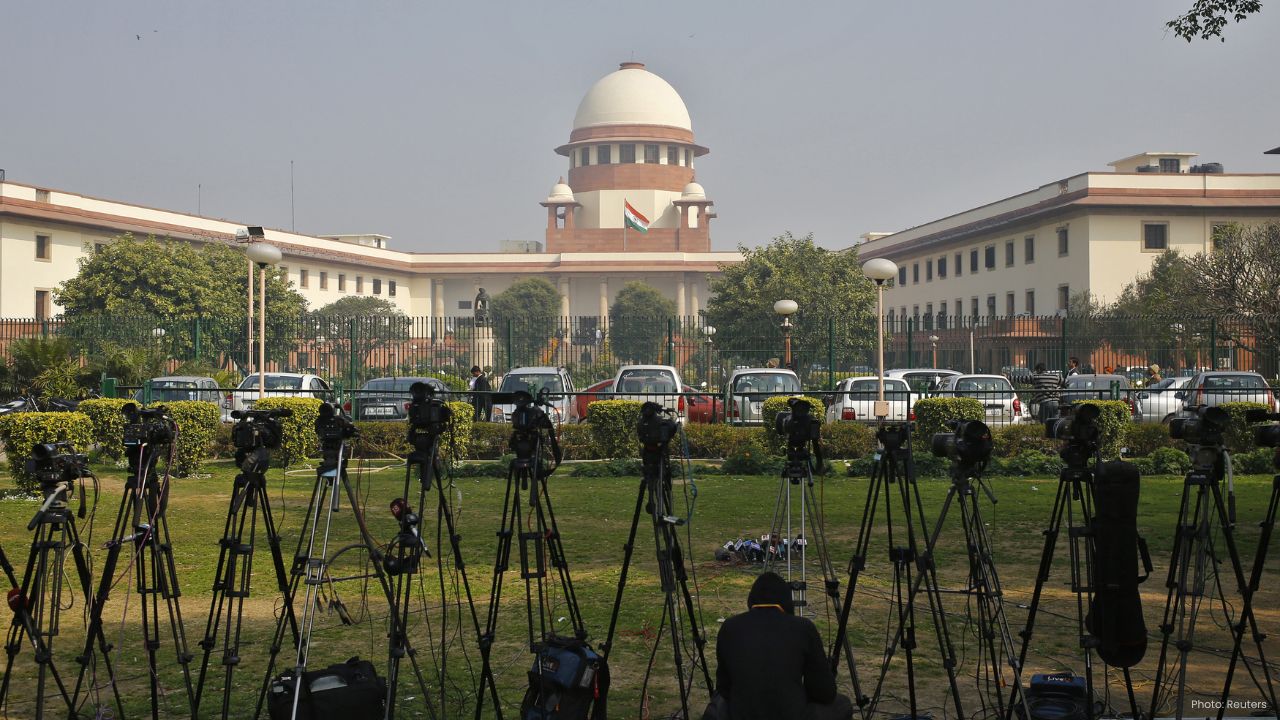
Josh Allen struggles as Bills lose Bears edge Comm
Josh Allen throws two interceptions as Bills fall 24-14 to Falcons. Jake Moody's last-second FG lift

The Supreme Court on Friday permitted the sale and bursting of firecrackers in Delhi and the National Capital Region (NCR) for five days during Diwali, potentially marking the first festival season in years with legal fireworks in the Capital. The decision comes amid environmental concerns and questions about enforcement effectiveness.
A bench led by Chief Justice of India (CJI) Bhushan R. Gavai and Justice K. Vinod Chandran reserved its order after the Union government proposed allowing only “green firecrackers” approved by the National Environmental Engineering Research Institute (NEERI) under a tightly regulated framework. The court said, “For the time being, we will allow it during the five days of Diwali on a trial basis…However, we will confine it to certain time limits.”
Government Proposes Strict Guidelines for Firecrackers
During the hearing, Solicitor General Tushar Mehta presented a detailed enforcement plan restricting sales to licensed traders and banning online platforms such as Flipkart and Amazon from facilitating firecracker sales in Delhi-NCR. Traditional firecrackers will remain banned.
The government suggested strict time windows for use:
Diwali and major festivals: 8 pm to 10 pm
New Year’s Eve: 11:55 pm to 12:30 am
Gurpurab: one-hour slots in the morning and evening
Firecrackers could also be used for weddings and other personal occasions. Mehta urged the court to relax Diwali timings, arguing that children should not be restricted to two hours of celebration.
Environmental Concerns and Past Experiences
Experts have repeatedly warned that such relaxations may not reduce pollution. Between 2018 and 2020, similar policies for green firecrackers showed no measurable improvement in air quality. Children and elderly people are particularly vulnerable to air pollution, which spikes during Diwali due to fireworks and factors such as stubble burning and weather conditions.
Sunil Dahiya, founder of think-tank Envirocatalysts, stated that green firecrackers could set back Delhi’s fight against air pollution by a decade if not properly controlled. “Episodic events such as firecracker bursting lead to temporary spikes in pollution,” he said, emphasizing the need to tackle stubble burning and perennial sources like transport, industries, and construction.
Challenges in Enforcement
Senior advocate Uttara Babbar, assisting as amicus curiae, called the government’s enforcement plan “lip service,” noting that the Petroleum and Explosives Safety Organization (PESO) has no testing facilities in Delhi to verify products.
Green firecrackers replace barium nitrate with zeolites, reduce aluminum content, and include dust suppressants, which NEERI claims cut emissions by 30-35% compared to conventional crackers. However, experts caution that mass usage could negate these benefits. Mukesh Khare, an air pollution expert from IIT Delhi, noted that even green crackers, if widely used or mixed with conventional ones, would still spike pollution levels.
Judicial Context and Past Rulings
The court’s decision reverses a recent ruling by Justice Abhay S. Oka in April, which extended the firecracker ban to NCR states, citing Delhi’s “horrible” air quality. The CJI-led bench highlighted the 2018 Arjun Gopal case, which permitted community fireworks and green crackers with stipulations.
The bench questioned whether data showed substantial improvement in Delhi’s air quality index between 2018 and 2024 to justify the April 2025 ban.
Enforcement Mechanisms Proposed
The government outlined several enforcement measures:
Manufacturers to submit QR codes to PESO and pollution control boards
Maintain detailed production and sales records
Conduct regular emissions testing
Surprise inspections at manufacturing, storage, and retail sites
Penalties, including license suspension and closure, for violations
Public awareness campaigns via apps like Sameer and Green Delhi
Authorities will also continue research on lower-emission crackers and conduct source apportionment studies to gauge fireworks’ contribution to air pollution.
Industry Livelihoods and Practical Concerns
The court acknowledged that testing facilities could not be established overnight and suggested random sampling. It also considered the livelihoods of firecracker industry workers, many from marginalized communities. Senior advocate K. Parameshwar proposed earmarking specific sale points to ensure compliance.
Last month, the court allowed production by NEERI and PESO-certified manufacturers but prohibited sales in the NCR, noting that a blanket ban without robust enforcement was unsustainable. The Commission for Air Quality Management highlighted monitoring gaps, including cases where QR codes were sold to unlicensed producers.
Pollution Data Highlights Past Impact
Data from 40 monitoring stations last year recorded severe spikes in fine particulate matter during Diwali, peaking between 11 pm and 2 am. For instance:
Vivek Vihar: 1,853 µg/m³
Patparganj: 1,504 µg/m³
Nehru Nagar: 1,527 µg/m³
These levels exceeded the WHO safe limit of 15 µg/m³ by over 100 times, underscoring the environmental stakes even with green crackers.
While the Supreme Court has allowed a trial period for firecracker use during Diwali, the success of this measure depends heavily on strict enforcement, public awareness, and adherence to environmental safeguards. Experts remain cautious, warning that even green firecrackers could worsen air quality if mismanaged.